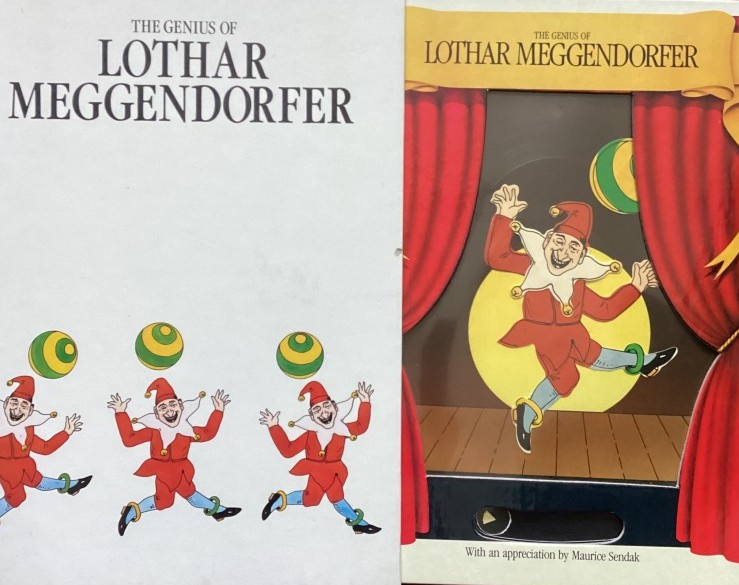Inspiring Young Readers
 posted on 05 Oct 2022
posted on 05 Oct 2022
The Genius of Lothar Meggendorfer
Whenever the Letterpress Project gets a chance to go into schools and introduce children to some of the pleasures that can be had from handling and reading actual physical books instead of relying on electronic screens, it is always the pop-up books that cause the biggest sensation. And that is understandable given that the quality and intricacy of the paper engineering skills required to produce such literally breathtaking effects is astonishing.
But the modern day pop-up book is really a sub-set of a much bigger genre – the moveable book or, as it was sometimes referred to – the ‘book toy’. The moveable book dates back well into the 19th century and is a term that can encompass any images that can be made to move by the reader or which, through the use of hinged flaps for example, contain information that the reader can reveal for themselves or which give the page a three-dimensional quality.
By the middle of the 19th century these moveable books for children were becoming increasingly popular and much of the innovation was taking place in Germany. At the forefront of this new art was Lothar Meggendorfer (1847 – 1925), a German illustrator who took on the challenge of making his colourful drawings move on the page.
Meggendorfer’s skills are showcased in this 1985 celebratory publication from the publisher, Jonathan Cape that has a short appreciation of the man’s art by that other great children’s book illustrator, Maurice Sendak who captures the remarkable levels of artistic vision and technical skill that combine to produce the very best kind of movable book:
“Quite simple, Meggendorfer turned the mechanical toy book into a work of art. He was a supreme master of animation: every gesture, both animal and human, is conveyed with uncanny precision…..But the pictures do more than move; they come passionately to life.”
Sendak goes on to suggest that the secret of Meggendorfer’s appeal for children is that:
“(He) never condescended to children. He granted them…a lively intellect and a cultivated visual taste. He knew children observed life more shrewdly than adults; that they enjoy with a kind of sensual gusto the delights of color, shape and movement.”
It is Meggendorfer’s commitment to complex mechanical interactions within his paper engineering that are designed to produce movement in his pictures that makes him stand out as one of the finest creators of the moveable book. Levers and pivots abound and this book gives the reader a dedicated page that features the behind-the-picture construction so that its possible to see just how complex his ideas were.
A further half a dozen of his best known illustration are featured alongside the accompanying simple verse that inspired it. Quite honestly, the verses are negligible when compared to the stunning illustration.
The book has an introduction and short appreciation of his work written by Waldo H. Hunt and the last page carries an explanation of why his engineering was so revolutionary.
This is a charming celebration of the man – who was unknown to me before we found a copy of this – and it come housed in a protective slip-case to ensure that the moveable image on the front cover is also protected.
Copies of this book can still be found on the second hand book websites and can be purchased for under £20 – which I think is a real bargain.
Terry Potter
October 2022



